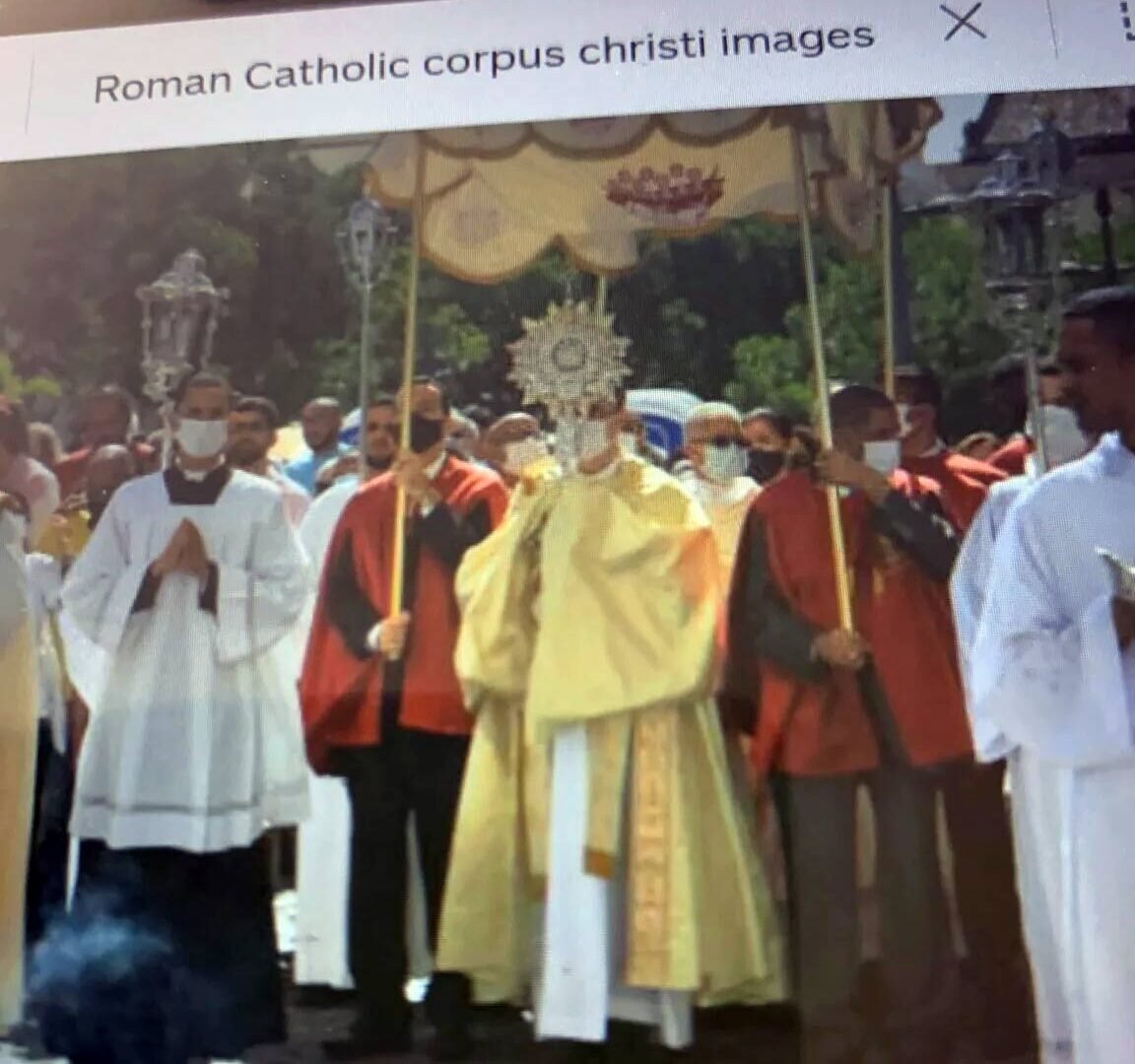Feast (officially known as Tijelovo) is a national holiday and non-working day in Croatia since 2001.[46] Around churches and in the city centers processions are held, headed with priests carrying Blessed Altair Sacrament. They are usually followed by four men carrying a canopy above the Sacrament and children in white who throw flower petals (usually rose) along the way.[46]
England
In medieval times in many parts of Europe, Corpus Christi was a time for the performance of mystery plays. The plays in York, England, were performed on Corpus Christi Day for some 200 years until their suppression in the sixteenth century during the Protestant Reformation.[55]
Peru
In the southern highlands of the Cusco Region of Peru, the festival of Quyllurit’i is held near Corpus Christi in the Sinaqara Valley. As many as 10,000 pilgrims come from neighboring areas. Culminating on Trinity Sunday, this festival marks the return in the sky of the Pleiades constellation, known in the Quechua language as Qullqa, or “storehouse”, as it is associated with the upcoming harvest and New Year. The festival precedes the official feast of Corpus Christi, held the Thursday following Trinity Sunday, but it is closely associated with it.[56]

The official feast on Thursday is a baroque display of religious syncretism between Catholicism and Incan traditions. Ten days before the main event, the Virgin of Bethlehem and Saint Joseph are taken in procession to the Church of Santa Clara. On the main day, the Eucharist is celebrated with a special mass and a procession around the main square, followed by a procession of saint images, including Saint Jerome, Saint Sebastian, Saint Anne, Saint Barbara, Saint James, Saint Blaise, Saint Anthony the Abbot, Saint Christopher, the Virgin of Remedies, the Virgin of the Nativity, the Purified Virgin, the Virgin of Bethlehem, and the Virgin of the Immaculate Conception.[57]
The saints remain in the Cusco Cathedral for eight days, where they are believed to “debate” the city’s future and the behavior of the faithful. Afterward, they have a farewell procession around the Plaza de Armas and return to their respective temples over the following week. The festival also features the consumption of “chiriuchu,” a traditional dish.
